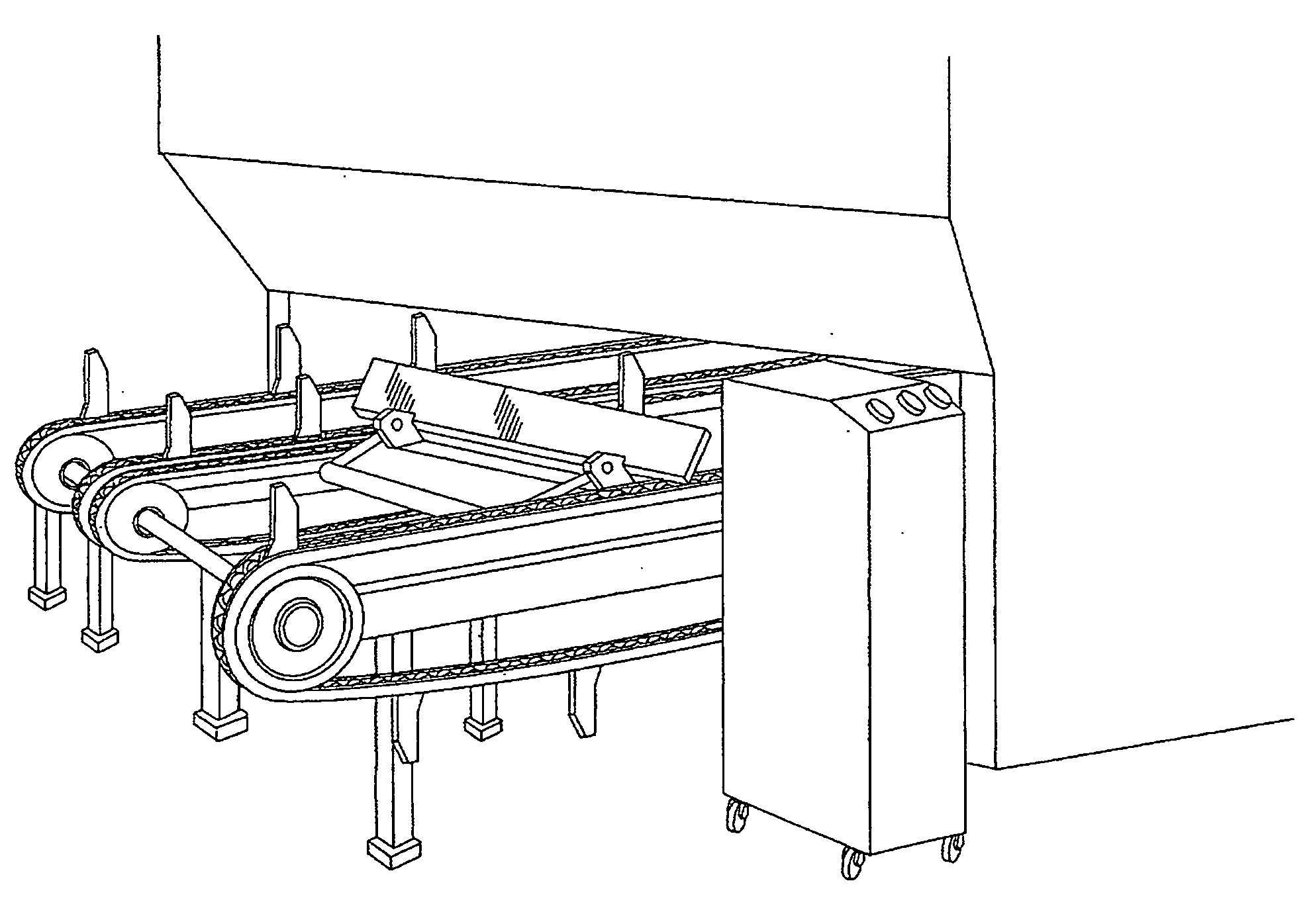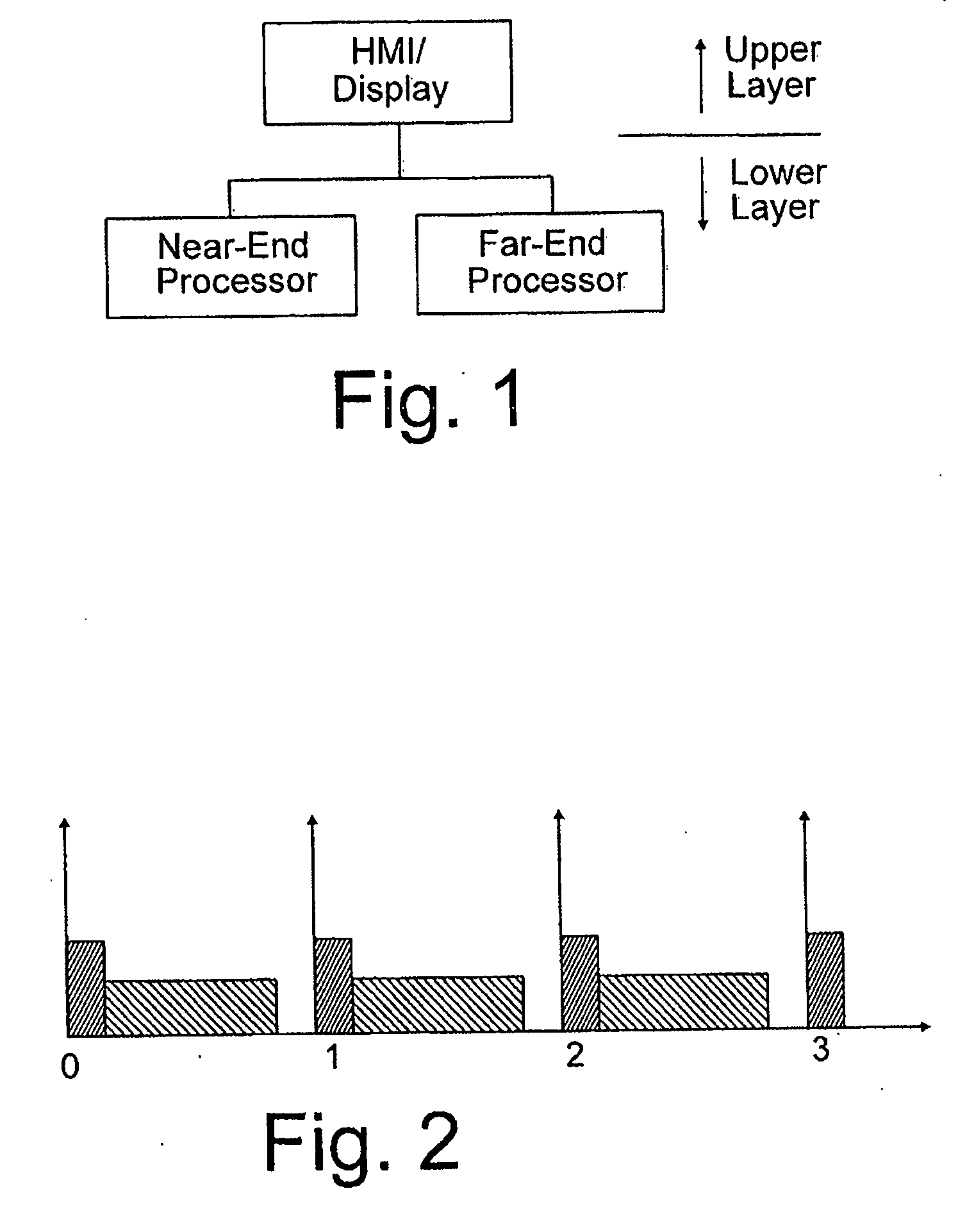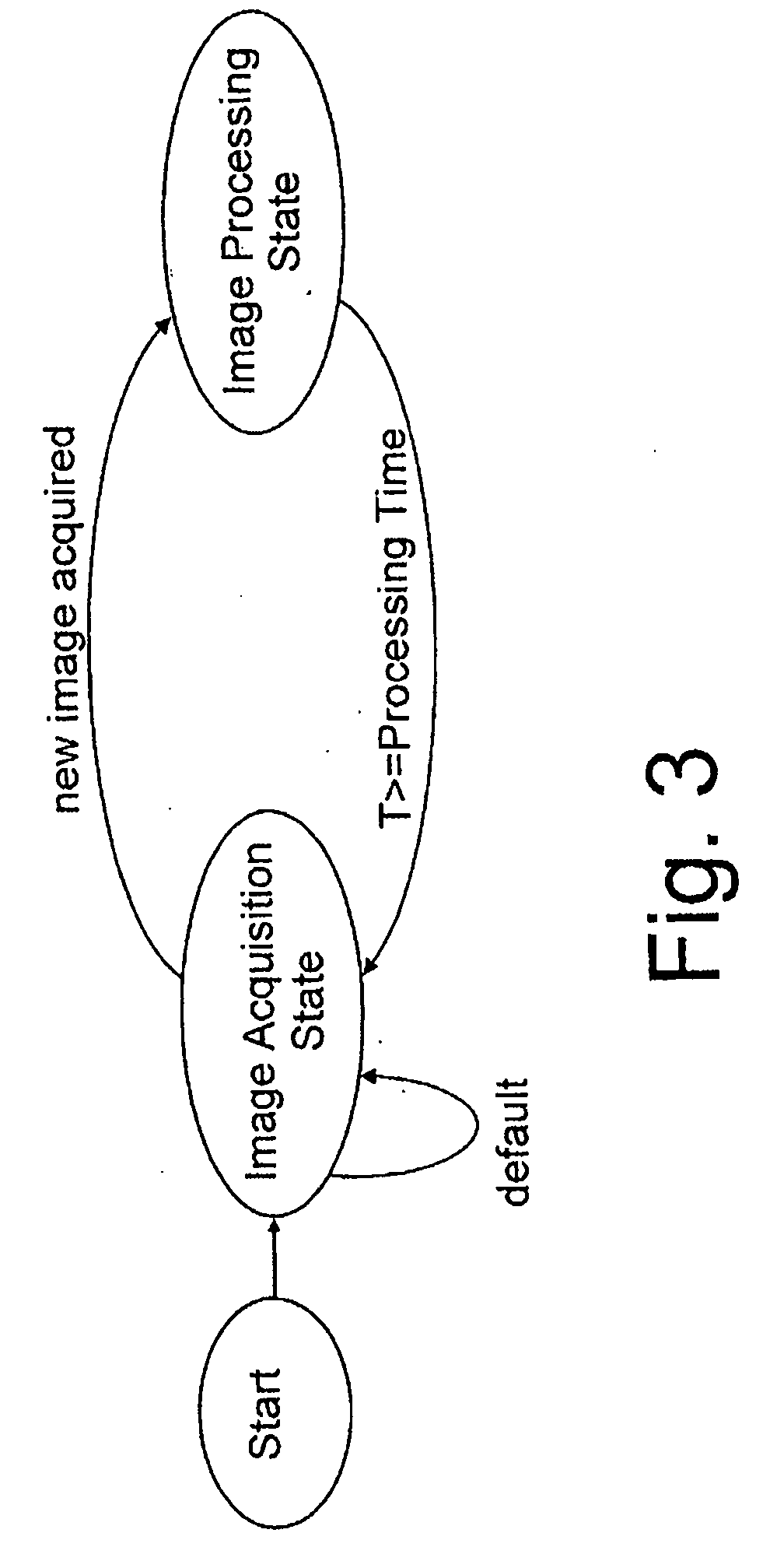Method and System for Determining Characteristics of Lumber Using End Scanning
a technology of end scanning and characteristics, applied in the direction of material testing goods, sorting, instruments, etc., can solve the problems of inability to effectively see the far end of each piece of lumber passing by, inability to assess other useful properties of lumber, and inability to fully utilize near-end and far-end information
- Summary
- Abstract
- Description
- Claims
- Application Information
AI Technical Summary
Benefits of technology
Problems solved by technology
Method used
Image
Examples
Embodiment Construction
[0037]Referring to FIGS. 1 and 2, which illustrate respectively side and top plan views of a grading system and method according to the invention, the system 10 comprises a lumber conveyor 12 which transports lumber in a transverse position, that is, such that the elongate axis of each board 14 is oriented transverse to the direction of travel along the grading table conveyor system 12. The conveyor 12 transports lumber 14 across a grading table. The conveyor 12 comprises a plurality of spaced apart moving belts or chains 18 for supporting and conveying the lumber across the grading table. An example of a suitable conveyor system is described in U.S. patent application Ser. No. 5,412,220, which is incorporated herein by reference. In a typical sawmill operation, lumber 14 is placed on the conveyor 12 in an even-ended orientation, that is, with a first end of all boards being substantially aligned, while the opposed second end will vary in position depending on the board length. The ...
PUM
 Login to View More
Login to View More Abstract
Description
Claims
Application Information
 Login to View More
Login to View More - R&D
- Intellectual Property
- Life Sciences
- Materials
- Tech Scout
- Unparalleled Data Quality
- Higher Quality Content
- 60% Fewer Hallucinations
Browse by: Latest US Patents, China's latest patents, Technical Efficacy Thesaurus, Application Domain, Technology Topic, Popular Technical Reports.
© 2025 PatSnap. All rights reserved.Legal|Privacy policy|Modern Slavery Act Transparency Statement|Sitemap|About US| Contact US: help@patsnap.com



